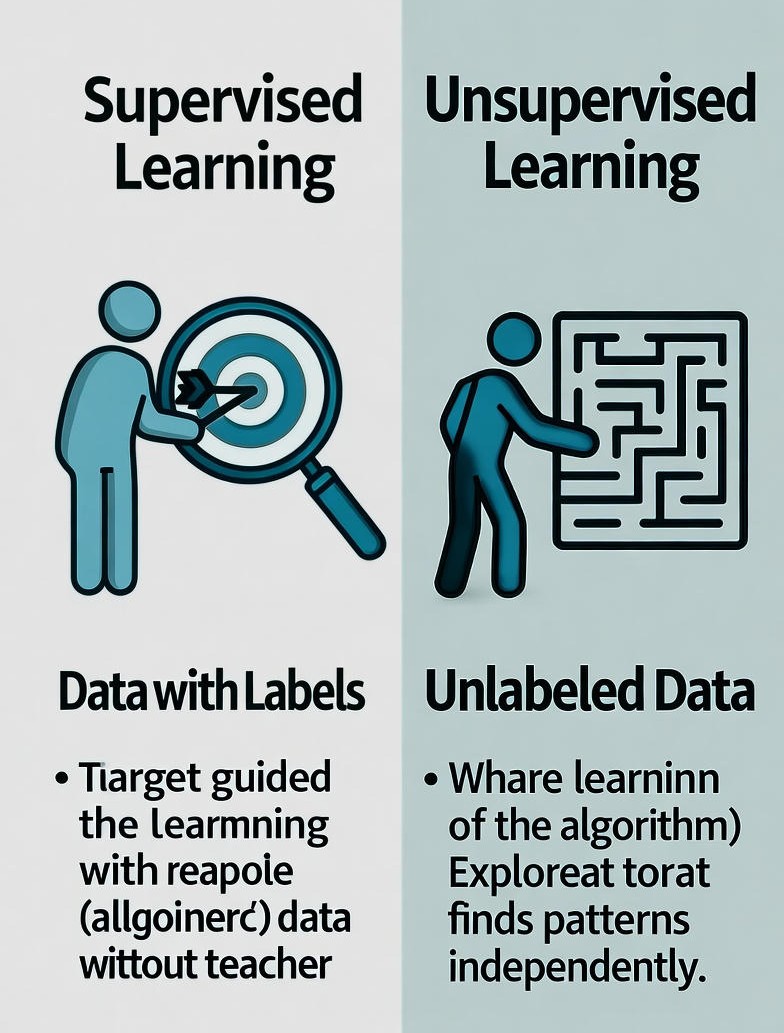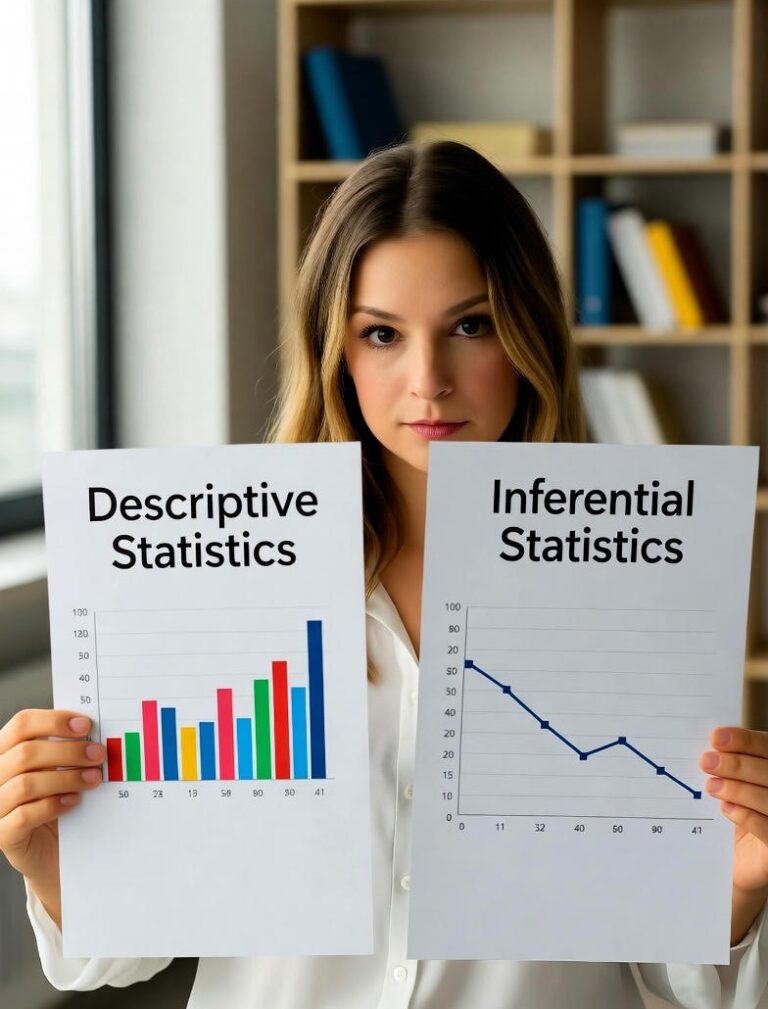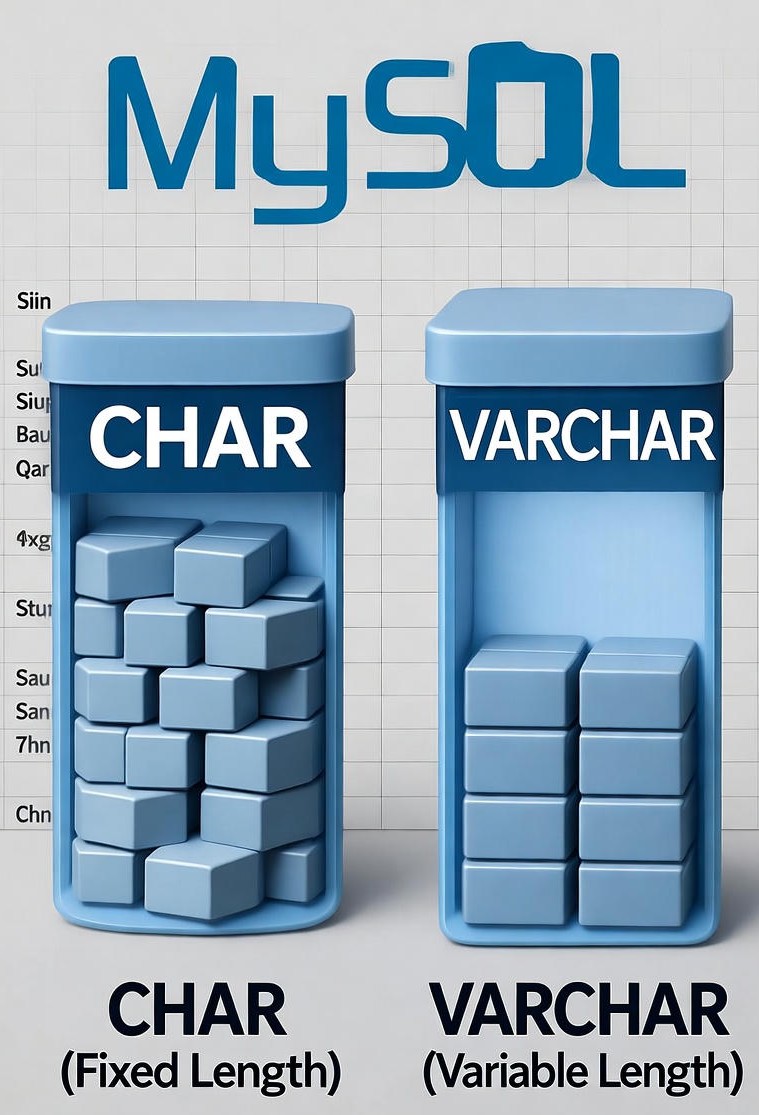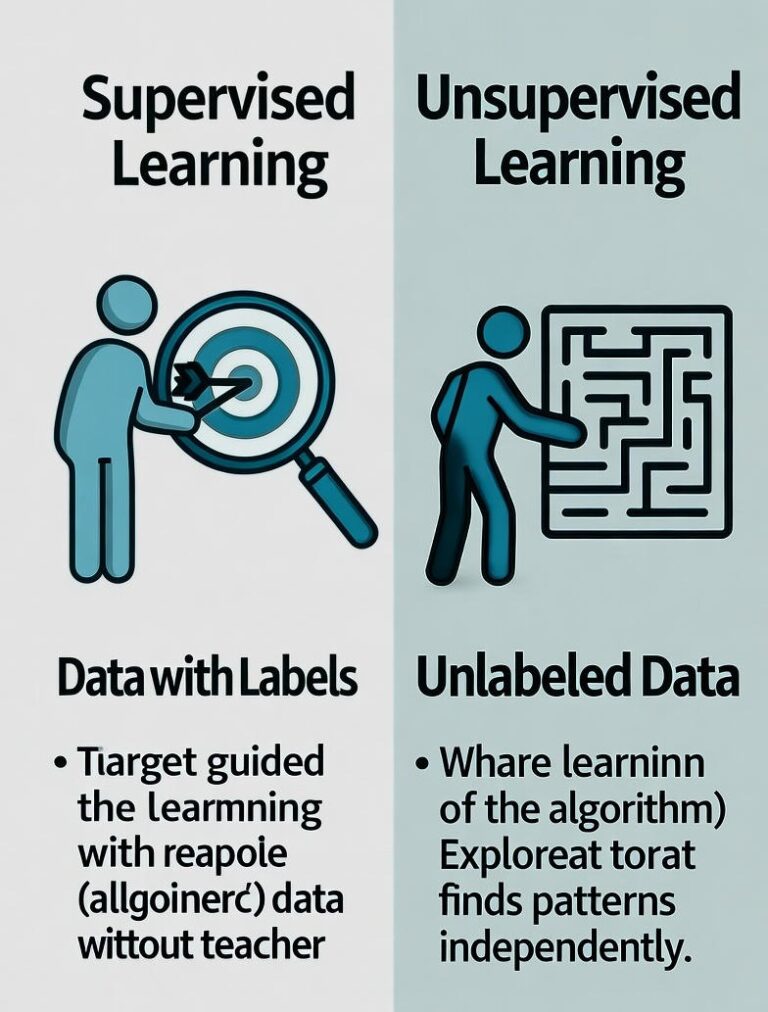
Difference Between Supervised and Unsupervised Learning
🧩 1. Supervised Learning
📘 Definition
Supervised Learning is a type of machine learning where we train the model using labeled data — that means every training example has both:
- Input features (X)
- Correct output label (y)
👉 The goal is to predict outputs for new, unseen data accurately.
🎯 Goal
To learn a mapping function from input features → output labels.
🧮 Types of Supervised Learning
| Type | Output Type | Example | Algorithms |
|---|---|---|---|
| Classification | Discrete (Category) | Spam / Not Spam | Logistic Regression, Decision Trees, Random Forest, SVM |
| Regression | Continuous (Numeric) | Predicting house prices | Linear Regression, Lasso, Ridge |
💻 Example Code — Supervised Learning (Classification)
from sklearn.datasets import load_iris
from sklearn.model_selection import train_test_split
from sklearn.ensemble import RandomForestClassifier
from sklearn.metrics import accuracy_score
# Load dataset (labeled)
data = load_iris()
X = data.data # Features
y = data.target # Labels
# Split data into training and testing sets
X_train, X_test, y_train, y_test = train_test_split(X, y, test_size=0.3, random_state=42)
# Train a classifier
clf = RandomForestClassifier(n_estimators=100, random_state=42)
clf.fit(X_train, y_train)
# Make predictions
y_pred = clf.predict(X_test)
# Evaluate performance
print("Predicted labels:", y_pred)
print("Accuracy:", accuracy_score(y_test, y_pred))
🧾 Output (Example)
Predicted labels: [1 2 0 1 2 0 0 1 2 1 2 0 0 1 1 2 0 2 2 1 1 0 0 2 1 2 0 2 1 1 2 0 0 2 1 2 0 2 1 1 0 2 1 2 1]
Accuracy: 0.9777777777777777
✅ Explanation:
- The model correctly predicts ~98% of test samples.
- The Iris dataset has 3 species: setosa, versicolor, virginica — and the Random Forest classifier successfully classifies them.
🧩 2. Unsupervised Learning
📘 Definition
Unsupervised Learning deals with unlabeled data — i.e., we only have inputs, no predefined outputs.
👉 The goal is to find hidden patterns, clusters, or relationships in the data.
🎯 Goal
To understand the inherent structure of data without knowing the correct answers.
🧮 Types of Unsupervised Learning
| Type | Goal | Example | Algorithms |
|---|---|---|---|
| Clustering | Group similar data points | Customer segmentation | K-Means, DBSCAN |
| Dimensionality Reduction | Reduce feature space | PCA for visualization | PCA, t-SNE |
| Association | Find item relationships | Market basket analysis | Apriori, FP-Growth |
💻 Example Code — Unsupervised Learning (K-Means Clustering)
from sklearn.cluster import KMeans
from sklearn.datasets import make_blobs
import matplotlib.pyplot as plt
# Generate synthetic unlabeled data
X, _ = make_blobs(n_samples=300, centers=4, random_state=42)
# Apply K-Means clustering
kmeans = KMeans(n_clusters=4, random_state=42)
kmeans.fit(X)
# Get cluster labels
labels = kmeans.predict(X)
# Plot clusters
plt.scatter(X[:, 0], X[:, 1], c=labels, cmap='viridis', s=50)
plt.title("K-Means Clustering Result")
plt.xlabel("Feature 1")
plt.ylabel("Feature 2")
plt.show()
🧾 Output (Visualization)
📊 The result is a scatter plot where data points are grouped into 4 clusters, each with a unique color (e.g., green, blue, yellow, purple).
Each color represents one cluster that the K-Means algorithm has discovered — purely from the input features (no labels used).
🧠 Summary Table — Supervised vs Unsupervised Learning
| Feature | Supervised Learning | Unsupervised Learning |
|---|---|---|
| Data Type | Labeled (X + y) | Unlabeled (X only) |
| Goal | Predict known outcomes | Discover hidden patterns |
| Feedback Mechanism | Learns via correct answers | No feedback, self-organized |
| Tasks | Classification, Regression | Clustering, Dimensionality Reduction |
| Examples | Spam detection, price prediction | Customer segmentation, anomaly detection |
| Evaluation | Easy to measure accuracy | Hard to evaluate results |
| Complexity | Data labeling is required | No labeling needed |
💡 When to Use Which?
- Use Supervised Learning when:
- You have labeled data.
- You want to predict specific outcomes.
- There’s a clear right answer (classification or regression task).
- Use Unsupervised Learning when:
- You have no labels.
- You want to find hidden structures or clusters.
- Labeling is expensive or impractical.
🚀 Bonus: Other Learning Types
| Type | Description | Example |
|---|---|---|
| Semi-Supervised Learning | Mix of labeled + unlabeled data | Speech recognition |
| Reinforcement Learning | Learns by trial and error with rewards/punishments | Self-driving cars, Game AI |
📈 Final Thoughts
In summary:
- Supervised Learning = Predictive (known labels).
- Unsupervised Learning = Descriptive (discover structure).
Both are fundamental to AI — one helps machines predict, the other helps them understand.





